How to Get Desktop Notifications for Gmail
Everyone appreciates punctuality, especially in the business world.
Whether it’s attending a meeting, answering questions, or replying to chats — your superiors and teammates will value you for your prompt reverts to emails.
But how do you ensure this when you aren’t on Gmail? Or the platform is closed?
You can enable desktop notifications for Gmail to stay your punctual self. This is a small pop-up on your screen that notifies you every time you receive a new email or chat message.
So even when you’re not looking at Gmail, you still know whenever anyone tries to contact you.
In this guide, we’ll discuss Gmail notifications in more detail — how you can turn them on, turn them off, and fix common problems.
Excited? Let’s get right to it!
First Things First, What Is a Gmail Notification?
The Oxford dictionary defines ‘notification’ as the action of notifying someone or something. You can also call it an act of informing, telling, or alerting someone or something.
So when you add Gmail in front of notification, it means informing the Gmail user whenever they receive a new message — even when they aren’t actively another browser tab open.
The user sees a small pop-up notification, usually on their right-hand corner of the screen, that includes the sender’s name, along with the email subject. Something like this:

How to Turn on Desktop Notifications for Gmail
Irrespective of whether you have Windows or macOS, you can enable desktop notifications for Gmail. But we would definitely recommend using Google Chrome as it’s the only browser that supports this feature.
That said, let’s now discuss how you can get desktop notifications for Gmail:
Step #1 Open Google Chrome on your laptop, and type in https://www.gmail.com in your search bar.
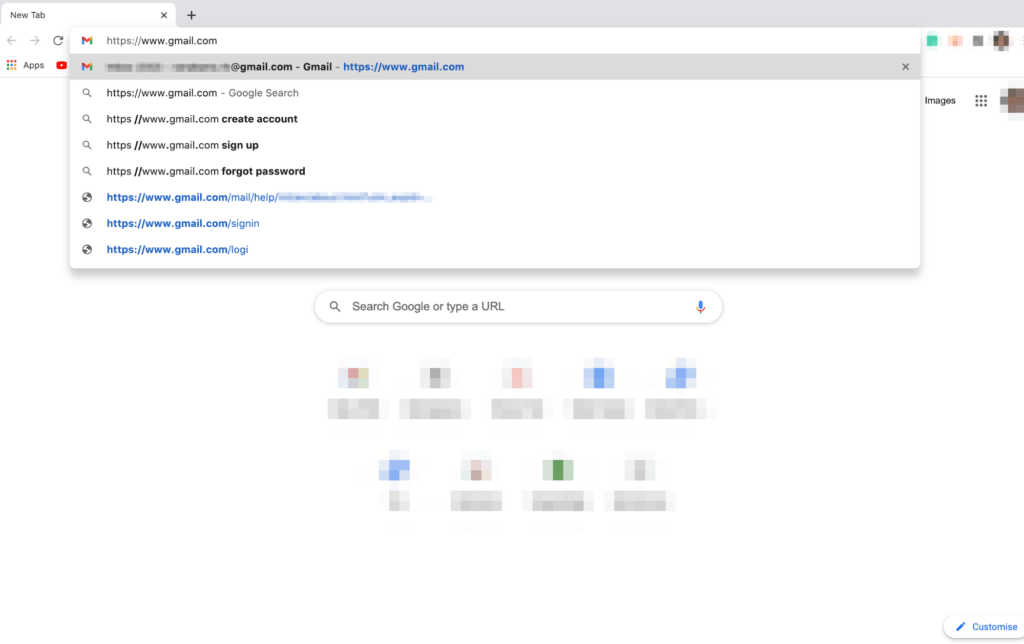
If you’re already logged into your Gmail account, you’ll see your inbox. But if not, you’ll have to enter your email address and password when prompted to open your inbox.
Step #2 Click on Settings, which is located on the top right-hand corner of your screen. It’s denoted by a cogwheel icon. A dropdown menu will open next.
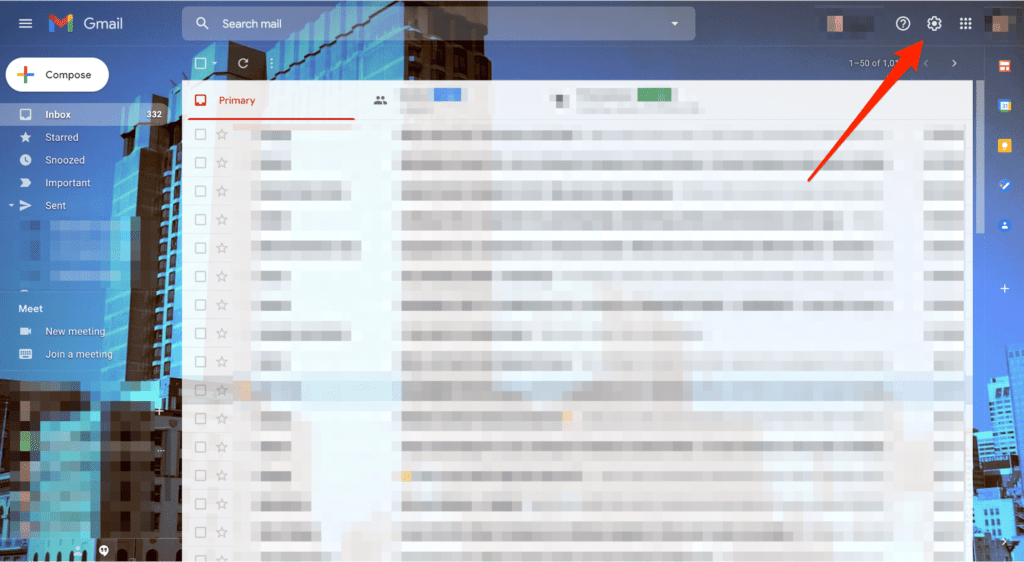
Step #3 Select See all settings.
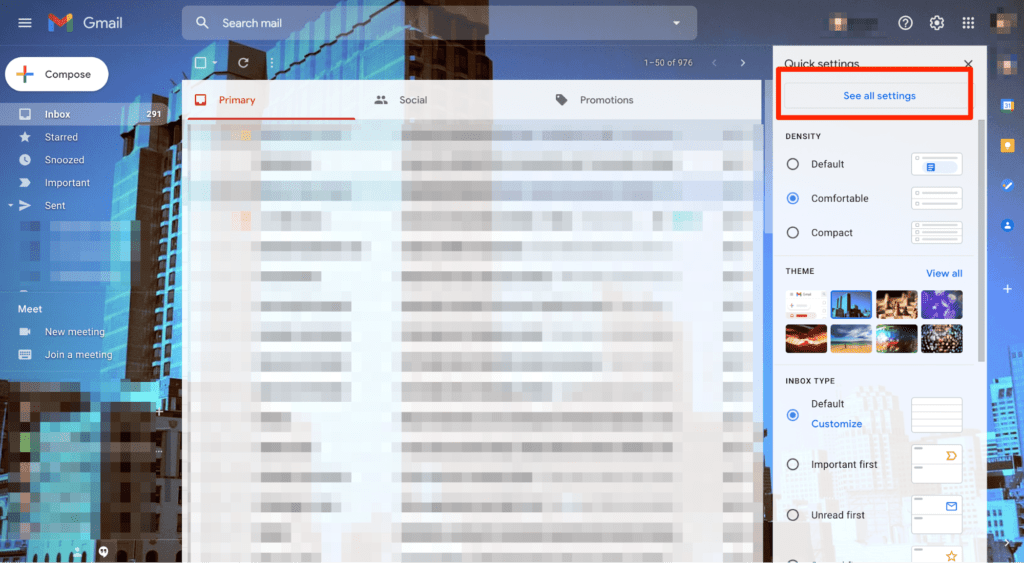
Step #4 You’ll see options under the General tab in the top menu by default, which is exactly what we need.

Scroll below to the Desktop Notifications field. This will be towards the middle of the settings page.
Step #5 You’ll see a Click here to enable desktop notifications for Gmail link, along with three other options. These include:
- New mail notifications on: You’ll get notifications whenever you receive any new message in your inbox or primary tab.
- Important mail notifications on: You’ll get notifications only when an important message — that you have starred — arrives in your inbox.
- Mail notifications off: This is the default setting that we want to change.
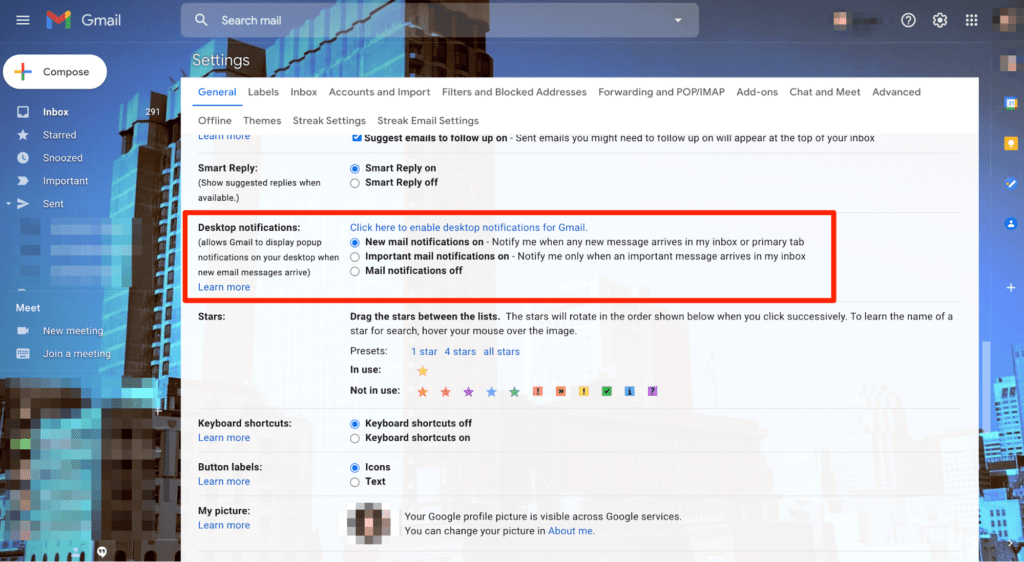
Step #6 Once you’ve checked the setting as per your liking, all that is left to do is save the settings. Scroll down to the bottom of the page. Click on the Save Changes options.
That’s it! You’ll receive a desktop notification whenever your browser is open, and when you receive an email that matches your selected criteria.
There are a few additional things you should keep in mind, though.
Firstly, check notifications are enabled by default. If you want to disable them, you’ll have to do so manually.
Secondly, after enabling notifications, make sure you approve mail.google.com to show desktop notifications. Lastly, you’ll need to be logged into Gmail in one of your windows as well to receive desktop notifications.
How to Turn off Desktop Notifications for Gmail
Desktop alerts can be useful but also annoying.
People usually don’t mind them when they are waiting for an important email or a prompt from their colleague, but this may not be the case always. Therefore, there is no need to keep your Gmail notifications on at all times, especially when you’re getting too many promotional emails.
Here’s how you can turn off your Gmail notifications within minutes:
Step #1 Type in https://www.gmail.com in your search bar after opening Google Chrome.

If you have to log in to your Gmail account, enter your email address and password when prompted
Step #2 Click on Settings — denoted by a cogwheel icon — located on the top right-hand corner of your screen. This will open a dropdown menu.
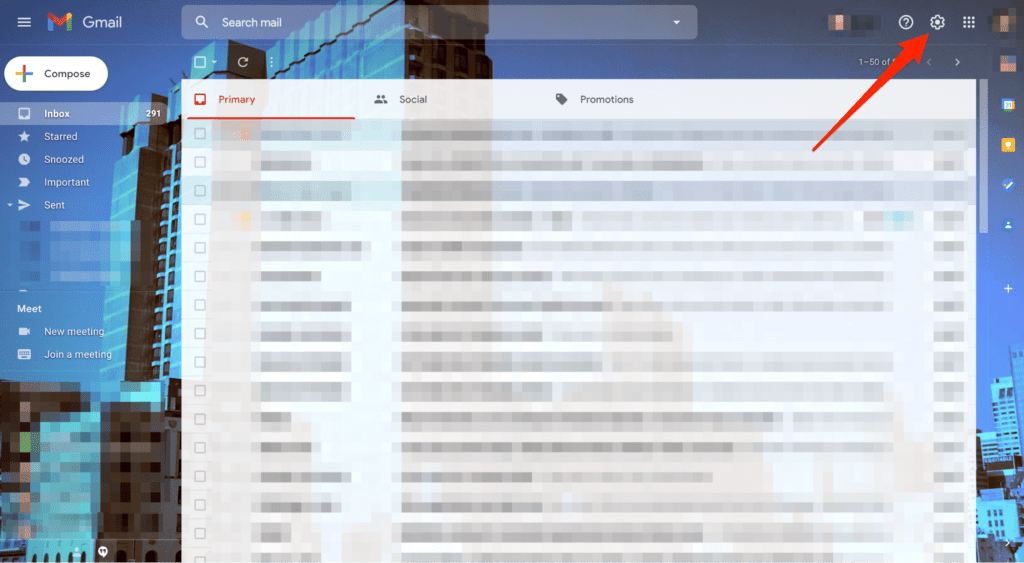
Step #3 Click on See all settings.

Step #4 You’ll see options under the General tab in the top menu by default, which is exactly what we need.

Step #5 Scroll down to give a tick next to the Mail notifications off setting in the Desktop Notifications field. This will mean you won’t receive any notifications whenever you receive a new email.
Step #6 Once you’re done, simply scroll down and select the Save Changes button at the bottom of the page.
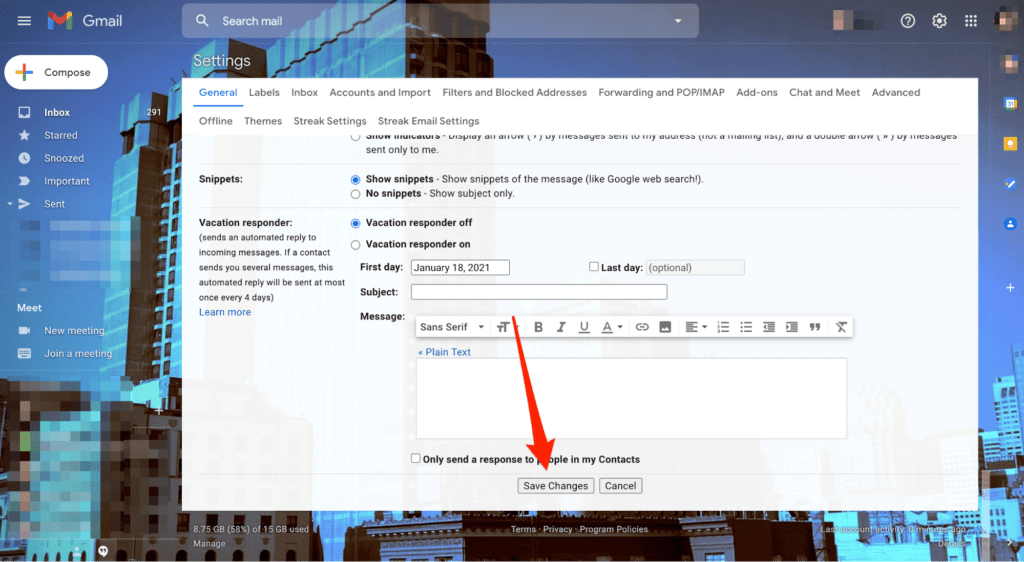
You will now stop receiving any desktop notifications — even when your browser is open — from Gmail.
Common Problems With Gmail Desktop Notifications
We all repent missing high-priority emails, important messages, or exciting sales offers. But what makes this even more annoying is when you had enabled the notifications for them and still didn’t receive them.
Whaaa… how… ugh.
We feel you, which is why we’ve compiled a list of the most common reasons why your desktop notifications aren’t working, and what you can do to fix it ASAP.
Problem 1: Your Internet Connection is Too Slow
You need an active internet connection to prevent any delay in your Chrome’s notification delivery on your computer. Depending on the device you use, you have two options:
- Mac users can analyze and improve their Wi-Fi network with Mac’s hidden network tool.
- Windows owners can fix Wi-Fi problems by troubleshooting.
At times, simply restarting your computer also does the trick. You may have to contact the internet service provider’s support team if you still don’t see any improvement.
Problem 2: You’ve Closed the Gmail Tab
You won’t receive any desktop notifications if you close the Gmail tab by mistake. Always cross-check to see whether the tab is open and active.
You can also reload the affected website to fix any notification problems. Pinning the Gmail tab is also a great option to prevent closing it by mistake.
Problem 3: You’ve Muted Your Computer, or Your Alert Volume Is Too Low
If your volume level is too low, you might miss the Gmail notification, as well as from other apps. This may sound childish, but it’s actually quite possible!
Also, most computer devices have a dedicated Mute/Unmute button. So make sure to set it to Unmute to avoid missing your notifications.
Problem 4: You Have Enabled Focus Assist on Your Windows Device or Do Not Disturb on Your Macbook
Focus assist is a useful setting for Windows devices that reduces distraction by disabling system-wide notification. On the other hand, Do Not Disturb is the macOS version of Focus assist.
- To disable Focus assist:
Go to Settings, followed by System, and Focus assist. Select the Off button.

- To disable Do Not Disturb:
Click on the Control Center icon in the top right corner of your Mac’s menu bar, and toggle off the Do Not Disturb option.

After hitting the Disable button, you should receive notifications as you usually would.
Problem 5: Your Google Chrome’s Notification Permissions Setting Isn’t in Order
Google Chrome should have permission to send notifications to your computer. If not, you won’t be notified.
- To Grant Chrome Notification Permission on Windows:
Go to Settings, and click on Systems followed by Notifications & actions from the menu. You have to toggle on the Notifications option.

After that, scroll to the Get notifications from these senders option, and toggle on the Google Chrome field.
- To Grant Chrome Notification Permission on Mac:
Go to System Preferences, and click on Notifications. You’ll find two notification instances for Google Chrome in your notification settings – click every entry and ensure Allow Notifications from Google Chrome is toggled on for every instance.

Once you’ve given Google Chrome permission to send your desktop notifications, you’ll be notified whenever you receive an email or chat message from a sender.
Problem 6: Still Not Receiving Notifications Despite Trying to Everything
If you still can’t see Gmail desktop notifications even after making the above fixes, it would be best to close and relaunch Google Chrome.
This will remove any glitches that could be preventing websites from delivering notifications to your computer. Another alternative is to reset the Chrome setting to revert the browser’s theme to factory default and also disable your extensions.
Beware: This will involve a lot of extra steps, so make sure you do this only when it’s the last resort.
Takeaway Thoughts
Gmail desktop notifications are super convenient — as one would expect from the platform.
Whenever you want to receive notifications about important emails or chat messages, you can turn it on. But when you want to continue working on other projects without any distractions, you can turn the notifications settings off. It’s entirely your call.
If you find you aren’t receiving notifications even after turning the settings on, it’s likely there are permissions or other reasons behind this. Simply follow our above methods to detect and fix the issue within minutes.

